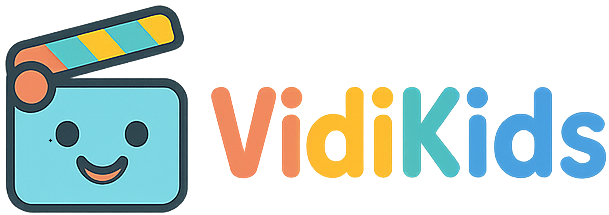In today's digital age, planning a screen-free day for kids can feel daunting—but it’s worth the effort. A well-organized unplugged day supports creativity, social connection, and mental well-being. This guide offers a thoughtful, practical approach to designing a screen-free day that actually works for families with children aged 4–10.

Why a Screen-Free Day Matters
-
Encourages creativity & problem-solving
Without screens, kids turn to imaginative play or hands-on activities—cases in point: simple games, crafts, or outdoor adventures Smartstartchildcarellc+13sparklestories.com+13parentclub.scot+13KidsPlay+1Business Insider+1. -
Supports mental health & focus
Too much screen time is linked to sleep issues, decreased attention spans, and digital dependence TIMEVerywell Family. -
Strengthens family bonds
Families who unplug together report increased closeness and richer conversations Freepik+15Business Insider+15Freepik+15.
Step 1: Set Clear, Realistic Goals
Instead of an all-day challenge, start with 3–4 hours screen-free, perhaps spanning morning or afternoon. Communicate the plan clearly: “Today, we’re doing a screen-free afternoon with three fun activities!”
Step 2: Prep in Advance
-
Activity bins – Fill baskets with art supplies, puzzles, board games, outdoor toys.
-
Snacks ready – Prepare healthy snacks to prevent screen-time boredom.
-
Schedule chart – A simple, visible timeline (e.g., “Art → Play Outside → Craft → Snack → Game”) gives kids a clear structure.
Step 3: Choose a Variety of Engaging Activities
1. Creative play (30–45 min)
Set up an art station with paper, paints, markers, or recycled materials. Open-ended crafts spark imagination The Times+3Parents+3TIME+3Freepik+4KidsPlay+4Dreamstime+4disciplemama.com.
2. Outdoor time (30–60 min)
Play in the yard, walk, or set up a treasure-hunt or gardening project. Even simple birdwatching counts as a "Green Hour" The Times+2Wikipedia+2sparklestories.com+2.
3. Quiet time (20–30 min)
Reading, coloring, or a listening corner helps kids recharge without screens Depositphotos+5disciplemama.com+5Business Insider+5.
4. Family board game (30–45 min)
Choose a suitable board game—like Jenga or Uno—that all ages can enjoy. This promotes reading, counting, and conversation Business InsiderKidsPlay.
5. Kitchen fun (30–45 min)
Bake simple cookies, make pizzas, or experiment in the kitchen. It teaches life skills and creates a sensory-rich experience sparklestories.comKidsPlay.
Step 4: Mix Movement & Calm
Balance active and quiet times:
-
After a creative burst, follow up with outdoor play.
-
After a game, take a short quiet break reading or journaling together Freepik+15Parents+15TIME+15kingascorner.com+15technosapiens.substack.com+15Depositphotos+15.
This rhythm keeps energy steady and prevents meltdowns.
Step 5: Include Reflection & Rewards
End the day together:
-
Ask: “What was the most fun part?”
-
Celebrate participation with a sticker or certificate—reinforcing the achievement of a screen-free day.
Tips for Success
-
Model commitment: Parents, siblings—everyone participates.
-
Be flexible: If kids resist, shorten sessions or change the activity.
-
Involve children: Let them vote on activities ahead of time.
-
Rotate activities weekly to maintain interest ParentsThe Guardian+3The Guardian+3Business Insider+3parentclub.scot+6KidsPlay+6TIME+6Freepikdisciplemama.com.
-
Prepare backup ideas in case mood or energy shifts.
Sample Screen-Free Day Schedule
| Time | Activity |
|---|---|
| 9:00–9:30 | Creative drawing or craft |
| 9:30–10:00 | Outdoor scavenger hunt |
| 10:00–10:30 | Quiet (reading/coloring) |
| 10:30–11:00 | Baking or cooking snack |
| 11:00–11:30 | Board game with the family |
| 11:30–12:00 | Reflection & reward time |
Real-World Benefits
Families report:
-
Better communication
More story-sharing and conversation emerge offline sparklestories.comFreepik+2Freepik+2TIME+2. -
Improved focus & patience
Kids handle transitions and tasks better without screens Wikipedia+7TIME+7KidsPlay+7. -
Stronger family connections
Shared, tech-free experiences build trust and enjoyment disciplemama.comBusiness Insider.
Final Thoughts
A well-planned screen-free day gives children the space to create, move, and connect meaningfully. By balancing active play, quiet time, shared projects, and tasty rewards, you'll offer fun, educational, and memorable moments—all without screens.
Start small, stay flexible, and celebrate the experience. Over time, these screen-free days can become a cherished family tradition—building creativity, focus, and deeper connections in everyday life.
; ?>







